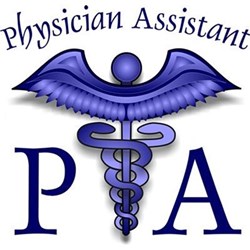In my 5 years as a physician assistant (PA), I have often been asked when I am going on to finish my schooling to become a physician. Time and time again, I have had to explain to family, friends and patients that a physician assistant is not a stepping stone to becoming a physician; it is the end-goal for those of us who chose this rewarding, challenging and fulfilling career. The physician assistant profession is growing, and PAs are a big part of the intricate health care team. Most patients are likely to be cared for by a PA at some point in their lives. So, it is important for patients to understand the specialized role of these providers.
Physician assistants are considered ‘Midlevel Practitioners’ or ‘Advanced Practice Providers’. Nurse practitioners (NPs) are the other providers that fall in this category. A physician assistant is required to provide health care services under a contract with a supervising physician. Although PAs function under a supervising physician, it is usually a collaborative effort between the two providers. In certain specialties, some PAs have their own patient population and function very independently, with help from their physician only as needed.
Each physician assistant’s scope of practice is different, depending on individual state laws, the needs of the office or practice, and the preferences of the supervising physician(s). Some responsibilities of a PA include performing physical exams, ordering and interpreting tests, diagnosing illnesses, developing and carrying out treatment plans, prescribing medications, performing minor procedures (i.e. casting, splinting, suturing), assisting in surgery, conducting clinical research and educating patients on preventive care. In 48 states, PAs are able to prescribe medications, and some are even able to prescribe narcotics if it is necessary in their practice and they are registered with the Drug Enforcement Administration.
The first step to becoming a physician assistant is a bachelor’s degree, followed by a master’s degree in Physician Assistant studies from an accredited school. The curriculum of PA school is based on the medical school model, including classroom education and clinical rotations. Graduates must pass a National board exam in order to obtain the necessary license and certification to work as a PA. The foundation of a PAs training is primary care medicine, but many PAs venture into a variety of specialties including cardiology, emergency medicine, orthopedics, gynecology and many more.
When you visit our practice at Three Rivers Orthopedics, you will likely come across one of our physician assistants. Depending on the reason for your visit, you may see one of our physician assistants as the sole provider for the visit or in conjunction with one of our physicians. Some of the independent roles of our physician assistants include seeing post-operative patients, performing wound care, administering joint injections, applying casts, and providing patient education. Our PAs may also see acute injuries and assess, diagnose and treat the injury first before the physician gets involved. Utilizing PAs as the sole provider for a visit often allows us to provide quicker care for the patient. However, when our PAs are your sole provider for the visit, their supervising physician(s) are always down the hall or a phone call away, in case they are needed. Another important role of the physician assistants at Three Rivers Orthopedics is first assisting in the operating room. Our PAs provide another set of experienced, skilled hands during surgeries. Each one has a good working relationship with each surgeon, allowing them to help make sure each surgery runs smoothly and is as successful as possible.
Stay tuned for next month’s blog which will include a short biography of each of the mid-level providers here at Three Rivers Orthopedics.
By Bethany Wink PA-C

